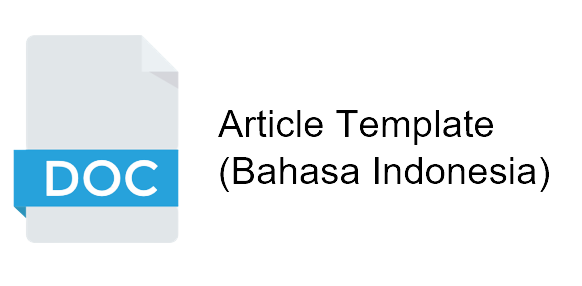Identifikasi Arsip Digital dengan Pendekatan Machine Learning
Danish Faiq Ibad Yuadi(1*)
(1) Sekolah Menengah Atas Negeri 2 Jombang
(*) Corresponding Author
Abstract
The development of archive digitization technology, especially cameras, is an advantage for archive users. On the other hand, the ease of falsifying by digitizing records for a particular purpose is a problem for archivists in authenticating digital records. The purpose of this study is to identify digital sources, especially cameras as one of the tools applied in the archive digitization process. The research methodology combines clustering and classification in machine learning to determine 6 brands of cellphone cameras. The total data used in this experiment is 2400 archived digital images. The experimental results show that the identification rate of classification accuracy is 99%. This shows that this study is very effective in determining the authentication of digital archives, especially determining the source of the camera.
Keywords
Full Text:
PDFReferences
Bondi, L., Baroffio, L., Guera, D., Bestagini, P., Delp, E.J., Tubaro, S., 2017. First Steps Toward Camera Model Identification With Convolutional Neural Networks. IEEE Signal Processing Letters, 24(3), 259-263. Chen, Y., Huang, Y., Ding, X., 2017. Camera model identification with residual neural network. IEEE International Conference on Image Processing, ICIP 2017, Beijing, China, September 17-20, 2017, 4337-4341. Freire-Obregon, D., Narducci, F., Barra, S., Santana, M.C., 2019. Deep learning for source camera identification on mobile devices. Pattern Recognition Letters, 126, 86-91. Friedman, G. L. (1993) The trustworthy digital camera: restoring credibility to the photographic image. IEEE Transactions on Consumer Electronics, 39(4), 905–910. Hosmer, D.W. & Lemeshow, S. (2000). Applied Logistic Regression. 2nd Edition, New York: John Wiley & Sons, Inc. Irene Amerini, Roberto Caldelli, Vito Cappellini, Francesco Picchioni & Alessandro Piva. (2010). Estimate of prnu noise based on different noise models for source camera identification. International Journal of Digital Crime and Forensics, 2(2), 21–33. Lukas, J., Fridrich, J.J., Goljan, M. (2006). Digital camera identification from sensor pattern noise. IEEE Transactions on Information Forensics and Security, 1(2), 205-214. Meyer, G. W., H. E. Rushmeier, M. F. Cohen, D. P. Greenberg, & K. E. Torrance. (1986). An experimental evaluation of computer graphics imagery. ACM Transactions on Graphics, 5(1), 30–50. Yuadi, I., M. D. Artaria, S. & A. Taufiq Asyhari. (2021). Digital forensics for skulls classification in physical anthropology collection management. Computers, Materials & Continua, 68(3), 3979–3995. Piva A. (2013). An overview on image forensics. ISRN Signal Process, 2013, 1–22. Podilchuk, C. I., E. J. Delp. (2001). Digital watermarking: algorithms and applications. IEEE Signal Processing Magazine, 18(4), 33–46. Reith, M., Carr C. & Gunsch, G. (2002). An examination of digital forensic models. International Journal of Digital Evidence, 1(3), 1-12. Ryan, D.J. & Shpantzer, G. (2002). Legal aspects of digital forensics. Diakses dari http://euro.ecom.cmu.edu/program/law/08-732/Evidence/RyanShpantzer.pdf Tolles, Juliana dan Meurer, William J (2016). Logistic Regression Relating Patient Characteristics to Outcomes. JAMA, 316(5), 533–534. Wen C, Yang K. (2006). Image authentication for digital image evidence. Forensic Science Journal, 5, 1–11. Yang, P., Ni, R., Zhao, Y., Zhao, W., 2019. Source camera identification based on content-adaptive fusion residual networks. Pattern Recognition Letters, 119, 195-204.
Article Metrics
Refbacks
- There are currently no refbacks.
Copyright (c) 2023 The authors

This work is licensed under a Creative Commons Attribution-ShareAlike 4.0 International License.






